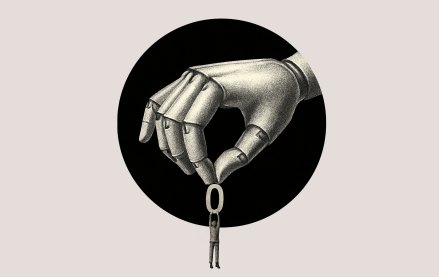Save 50% on a 3-month Digiday+ membership. Ends Dec 12.
Ad tech’s economy depends on float — and it’s getting pricier to keep it moving

Ad tech has always lived in a world where money moves slower than the ads it sells. Everyone’s floating — fronting payments to publishers while waiting weeks, sometimes months, for agencies and advertisers to settle up. The cost of doing so is only rising.
Nearly six in 10 invoices (58%) in the sector were paid late in the first half of the year, according to payment data form OAREX. Almost one in five arrived more than two weeks past due — after the original 60, 90 or even 120 days. Granted, this long tail of payments isn’t new. It’s how the machine has always worked. Advertisers push out payment terms. Agencies pass the delay downstream. From there, ad tech vendors draw on credit lines to keep publishers paid. Everyone finances everyone else. And as rates rise, the cost of keeping that wheel spinning climbs with it.
“If nobody was floating money there would be chaos,” said Adam Schenkel, GumGum’s evp of global platform strategy and operations.
He described what he called a “disproportional chain of payments.” GumGum pays publishers within 45 to 60 days but often waits 90 to 120 days to get paid by agencies. “We’re paying out a ton of cash,” he said.
For smaller players without deep credit lines that gap can be existential. But even larger companies aren’t immune. Rising interest rates, longer patent terms and slower payments are tightening the same vise that’s quietly held the ad tech economy together for years.
“It doesn’t really matter what size you are,” said Christopher Pettit, CEO of ad tech finance startup Revving. “You are still suffering because you’re effectively having to use your own balance sheet — your own working capital — to front-run cash out of your business to pay people downstream while you’re waiting to get paid by the brands at the very top of the supply chain.”
Sometimes, that money never arrives. A clause known as sequential liability is baked into most ad tech contracts stating that intermediaries are only responsible for payments once they themselves get paid. It was designed to protect the intermediaries from losses when a debtor defaults. In practice, it can strand publishers at the end of the chain — the last to be paid, and the first to eat the loss when something breaks upstream.
When banks won’t touch you
The crunch has created an opening for a small set of financiers built specifically for ad tech’s quirks.
For instance, investment fund FirstPartyCapital recently launched FirstPartyFinance, a debt finance arm designed to free up cash trapped in long payment cycles. In simple terms, it connects ad tech companies with tailored debt financing, using sector-specific underwriting to help companies get the cash needed to grow without having to give up equity or take predatory loans just to survive the industry’s own cash flow mechanics.
“But we don’t want to be reactive with debt financing,” said Ciarán O’Kane, a partner at FirstParty Capital. “We think when used in a proactive way, it can be used as a commercial weapon, making our portfolio companies sticker.”
That’s especially true outside the U.S., where access to debt financing is limited. Traditional banks still treat ad tech receivables as toxic — too opaque, too volatile, too exposed to market shocks. And when they do lend they often apply rigid criteria and demand steep guarantees.
“If our operations were based in Brazil instead of just being extended there, then this would be much harder than in the U.S. or Europe,” said Mateusz Jedrocha, chief product officer at Adlook.
The scale of the problem, and the opportunity to fix it, is attracting some serious capital. Earlier this year, Revving’s founders Petit and Dave Mandeno raised £107 million to expand their own financing platform. It advances payments to ad tech businesses — sometimes even before invoices are issued. It does so by plugging into real-time ad transaction data to assess credit risk upstream with major agencies and ad tech vendors rather than judging the creditworthiness of smaller, pre-profit clients.
“Traditional funders don’t have the ability to understand how these ecosystems work,” said Mandeno. “It requires a specialist funder to understand how the counterparties work, how the ecosystem works and to really get comfortable with funding into the space.”
That approach has allowed Revving to lend far more flexibly than banks. One client, Mandeno said, had been offered £8,000 by a traditional lender despite running hundreds of thousands of pounds through its platform each month. Revving advanced £300,000 to £500,000 in the first month and later provided a £2.5 million facility by underwriting the credit risk of the larger advertisers behind the invoices.
A slow motion squeeze
There’s a fatigue that runs through it all now. Each collapse — MediaMath, EMX and Silicon Valley Bank — tightens credit and exposes fresh liability. The market adapts, patches the hole and carries on as if nothing happened. The result is a system that looks stable precisely because it never stops moving — a rolling float funded by data, absorbing one insolvency at a time.
“The float is literally the moat and gives big ad tech a huge competitive advantage,” said O’Kane. “Invoice factoring and debt financing solves for that by bridging payments, enabling scale without equity dilution.”
Ad tech’s existential crisis has a balance sheet.
More in Marketing

In Graphic Detail: Here’s what the creator economy is expected to look like in 2026
Digiday has charted its expected revenue, key platforms for creator content as well as what types of creators brands want to work with.

Ulta, Best Buy and Adidas dominate AI holiday shopping mentions
The brands that are seeing the biggest boost from this shift in consumer behavior are some of the biggest retailers.

Future of Marketing Briefing: AI confuses marketers but their own uncertainty runs deeper
That was the undercurrent at this week’s Digiday Programmatic Marketing Summit in New Orleans.








